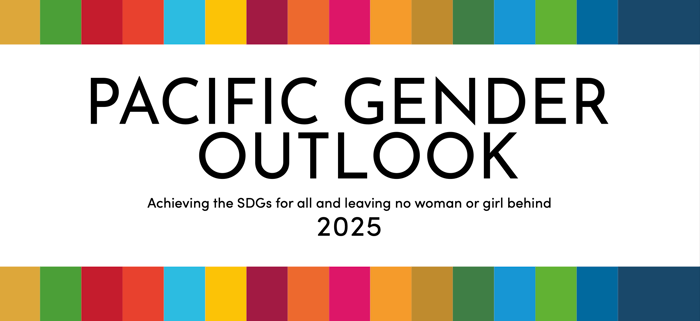UN Women and the Pacific Community (SPC) highlight gender gaps across the Pacific


Photo credit: UN Women / Pacific Community (SPC)
A new publication produced jointly by UN Women and the Pacific Community (SPC) highlights gender gaps in the achievement of the Sustainable Development Goals across the Pacific.
Launched at the 7th Regional Conference of Heads of Planning and Statistics (HOPS7), the Pacific Gender Outlook 2025 sheds light on the specific population groups that are lagging furthest behind across the 17 Sustainable Development Goals (SDGs) – including rural women, women and girls with disabilities, and those living in regions most affected by climate change.
Why this matters now
With the 2030 SDG deadline fast approaching, Pacific planners and statisticians, who are currently convening in Wellington at HOPS 7, must set priorities to accelerate progress towards the Goals. The Outlook highlights those groups that require enhanced attention and targeted investments to achieve the SDGs in the next five years, including enhanced efforts to produce more granular gender data.
Key findings
- Poverty and food security (SDGs 1 and 2): Rural women and girls are twice as likely to live in poverty as those in urban areas. Women are also more likely than men to be food insecure – and an additional 124,000 of them are projected to be pushed into food insecurity if climate change continues to worsen.
- Violence against women (SDG 5.2): Nearly 29 per cent of women experienced physical and/or sexual intimate partner violence over a 12-month period – more than double the global average –amid persistent social norms that justify wife‑beating in some contexts. People in rural areas are more likely to find reasons to justify wife-beating.
- Women’s leadership (SDG 5.5): Less than 8 per cent of parliamentary seats are held by women in the Pacific – the lowest share in the world – though several countries have made double‑digit gains in recent years. Younger women are notoriously absent from decision-making roles.
- Energy and infrastructure (SDGs 7 and 9): Infrastructure contributes substantially to women’s health. For instance, the availability of electricity and other clean fuel infrastructure contributes to women in the wealthiest households being 27 times as likely as those in the poorest households to cook with clean fuels. Infrastructure also enhances access to prenatal health: women in urban areas are more likely to see a skilled doctor and to deliver their children in adequate health facilities.
- Climate change and environmental degradation (SDGs 13, 14 and 15): Although data on the nexus between gender and the environment are not available for many Pacific countries, those that have it reveal that women are more likely than men to see their mental health affected in almost all countries, give up their food in favour of feeding others, and experience worsening unpaid care work burdens as a result of climate change. Similarly, marine degradation is driving up the rates of food insecurity in coastal areas and worsening women’s time burdens, who encounter disproportionate barriers to change fishing locations to maintain yields and their food intake.
What’s working
- Gender‑responsive climate policies: In recent years, climate policies across almost all Pacific countries and territories have seen improvements in the form of stronger gender references in updated Nationally Determined Contributions, creating opportunities for enhancing women’s resilience to climate change.
- Women’s participation in decision-making: Although representation in Pacific parliaments is low, countries such as the Federated States of Micronesia, Palau and Samoa have seen substantial improvements in recent years. Maintaining these gains and building similar trajectories in other countries and territories is important to ensure future policies are inclusive.
- Gender data is increasingly available and widely used: Recent investments in the production of gender data, coupled with a regional action plan for scaling up gender data efforts, the Pacific Roadmap on Gender Statistics, have driven gender data production and use across the region. As a result, most Pacific countries have data for 60 per cent or more of the gender-specific SDG indicators – exceeding the global average. The availability of these statistics is critical to monitoring progress and targeting policy solutions to advance gender equality across the region.
Voices from the region
“The Pacific Gender Outlook offers a critical lens on our region’s progress towards the SDGs revealing not only where we are advancing, but where women and girls are still being left behind. We must seize this evidence to drive bold, informed decisions if we are to deliver on our promise of gender equality by 2030.” — Alison Davidian, UN Women Representative for the Pacific
“The Outlook provides a clear, evidence-based picture of gender equality in the Pacific. On many indicators, outcomes for women and girls compare well to those for men and boys, but the data highlight serious concerns in certain areas—such as the very high rates of gender-based violence and very low representation of women in democratic decision-making. These insights are a critical reminder of the importance of official statistics for evidence-led policymaking and investment efforts.” — Peter Ellis, Director of Statistics for Development, Pacific Community
Read the full report: https://data.unwomen.org/publications/pacific-gender-outlook
Published by
UN Women


